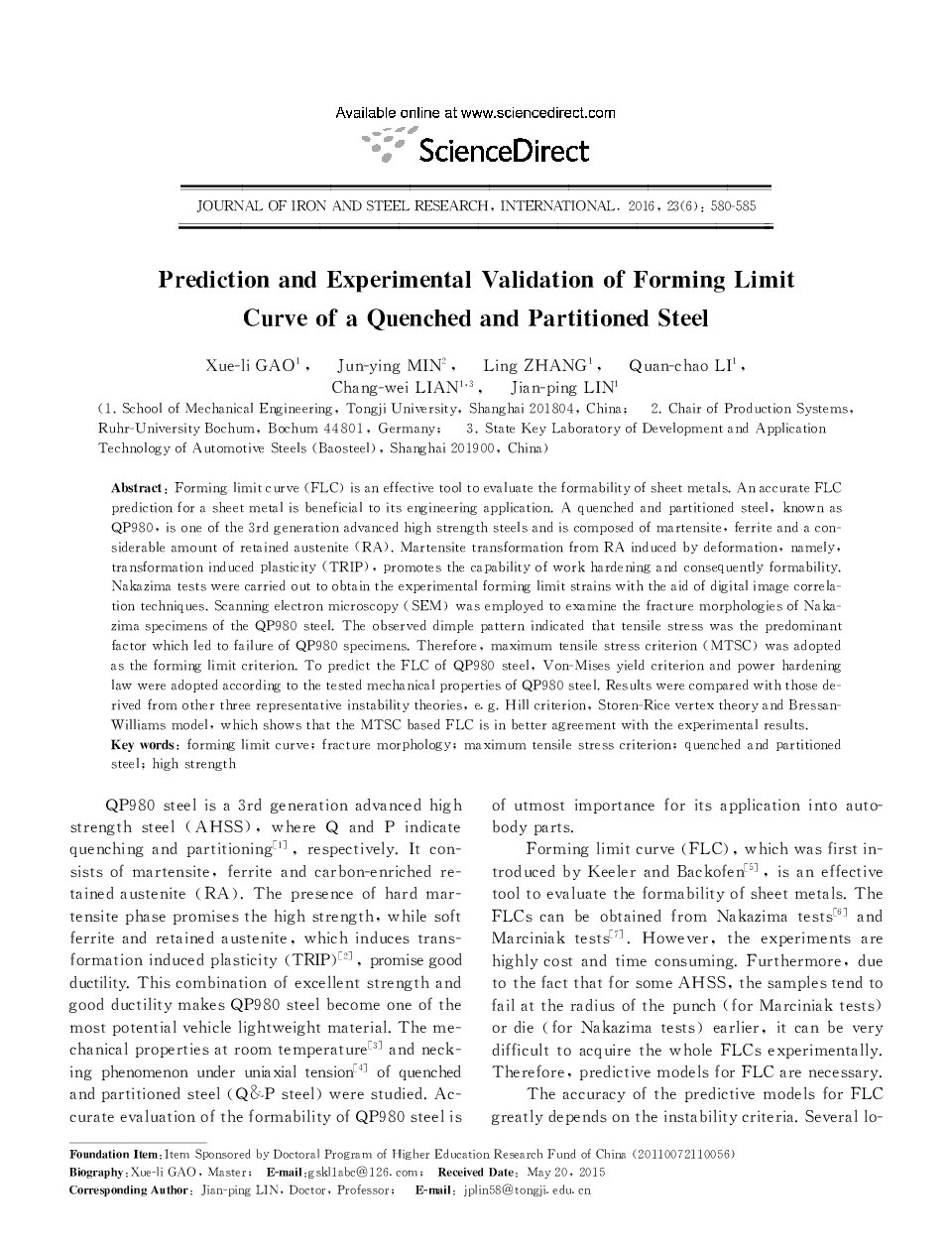| Article ID | Journal | Published Year | Pages | File Type |
|---|---|---|---|---|
| 1628095 | Journal of Iron and Steel Research, International | 2016 | 6 Pages |
Forming limit curve (FLC) is an effective tool to evaluate the formability of sheet metals. An accurate FLC prediction for a sheet metal is beneficial to its engineering application. A quenched and partitioned steel, known as QP980, is one of the 3rd generation advanced high strength steels and is composed of martensite, ferrite and a considerable amount of retained austenite (RA). Martensite transformation from RA induced by deformation, namely, transformation induced plasticity (TRIP), promotes the capability of work hardening and consequently formability. Nakazima tests were carried out to obtain the experimental forming limit strains with the aid of digital image correlation techniques. Scanning electron microscopy (SEM) was employed to examine the fracture morphologies of Nakazima specimens of the QP980 steel. The observed dimple pattern indicated that tensile stress was the predominant factor which led to failure of QP980 specimens. Therefore, maximum tensile stress criterion (MTSC) was adopted as the forming limit criterion. To predict the FLC of QP980 steel, Von-Mises yield criterion and power hardening law were adopted according to the tested mechanical properties of QP980 steel. Results were compared with those derived from other three representative instability theories, e. g. Hill criterion, Storen-Rice vertex theory and Bressan-Williams model, which shows that the MTSC based FLC is in better agreement with the experimental results.
